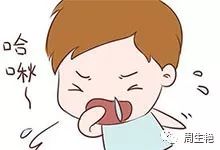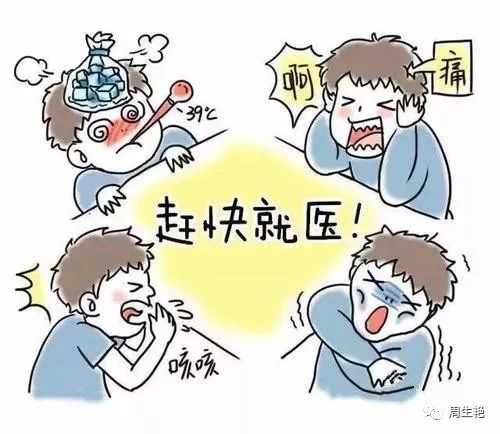Common cold is an external pathogenic disease caused by the invasion of wind evil or seasonal viruses, leading to dysfunction of the lung’s defensive Qi, with clinical manifestations including nasal congestion, runny nose, sneezing, cough, headache, chills, fever, general discomfort, and floating pulse. It can occur throughout the year, particularly in spring and winter. So, what is Wind-Heat Cold?
Introduction to Wind-Heat Type Cold
Wind-Heat Cold is caused by the invasion of wind-heat evil affecting the exterior and the disharmony of lung Qi. Symptoms include high fever, slight aversion to wind, headache, sweating, sore and swollen throat, cough with sticky or yellow phlegm, nasal congestion with yellow discharge, thirst with a preference for drinking, red tongue edges, and thin white slightly yellow coating. Wind-Heat Cold is more common in summer and autumn, resulting from the invasion of wind-heat. Traditional Chinese Medicine (TCM) considers Wind-Heat Cold as an exterior syndrome caused by the invasion of wind-heat evil.
Wind-Heat invasion often occurs in spring and summer. In spring, the weather is windy and warming, thus wind and warm-heat evils often combine to cause illness; in summer, the outdoor heat and indoor coolness create unstable temperatures, making it easy to fall ill. Wind-Heat Cold is characterized by the invasion of wind-heat evil into the lung’s defensive Qi, leading to disharmony of the exterior and the lung’s failure to clear and regulate.
Symptoms of Wind-Heat Cold in Children
Wind-Heat Cold is often triggered by constipation, frequently associated with Yangming channel syndrome. Typically, the sequence is as follows: after two days of constipation, a sore throat develops for one or two days, followed by cold symptoms, which is Wind-Heat Cold.
Symptoms of Wind-Heat Cold in Children
In children, Wind-Heat Cold primarily presents with high fever, but aversion to cold and wind is not prominent, nasal congestion with purulent discharge, heavy cough, or thick yellow phlegm, headache, thirst with a preference for drinking, red and dry or itchy throat. Bowel movements are dry, urine is yellow, and examination may reveal red and swollen tonsils, congested throat, thin yellow or thick yellow tongue coating, red tongue body, and floating rapid pulse.
Treatment for Wind-Heat Cold involves using cooling and lung-dispersing herbs, such as Sang Ju Gan Mao Pian (Sangju Cold Tablets) or Yin Qiao Jie Du Wan (Yin Qiao Detox Pills), Ling Qiao Jie Du Wan (Ling Qiao Detox Pills), and Ling Yang Gan Mao Pian (Lingyang Cold Tablets). Avoid using Qiang Huo Wan (Qiang Huo Pills) or Li Fei Wan (Lung Regulating Pills), as misuse can lead to increased body temperature and aggravated throat pain.
The treatment for Wind-Heat Cold generally focuses on relieving constipation (in conjunction with cooling and dispersing herbs, which usually yield quick results). There are many methods, such as drinking herbal tea or taking cooling detoxifying medicines like Ban Lan Gen Granules. Chinese patent medicines include San Huang Pian (Three Yellow Pills), Yin Qiao Jie Du Pian + Niu Huang Jie Du Pian, Ban Lan Gen, etc. Oral solutions for treating Wind-Heat Cold, such as Jin Yin Hua (Honeysuckle) oral liquid and antiviral oral liquid, can also be used.

Pharmacological Treatment of Wind-Heat Cold
Common cold is an external pathogenic disease caused by the invasion of wind evil or seasonal viruses, leading to dysfunction of the lung’s defensive Qi, with clinical manifestations including nasal congestion, runny nose, sneezing, cough, headache, chills, fever, general discomfort, and floating pulse. It can occur throughout the year, particularly in spring and winter. So, what is Wind-Heat Cold?

Introduction to Wind-Heat Type Cold
Wind-Heat Cold is caused by the invasion of wind-heat evil affecting the exterior and the disharmony of lung Qi. Symptoms include high fever, slight aversion to wind, headache, sweating, sore and swollen throat, cough with sticky or yellow phlegm, nasal congestion with yellow discharge, thirst with a preference for drinking, red tongue edges, and thin white slightly yellow coating. Wind-Heat Cold is more common in summer and autumn, resulting from the invasion of wind-heat. Traditional Chinese Medicine (TCM) considers Wind-Heat Cold as an exterior syndrome caused by the invasion of wind-heat evil.
Wind-Heat invasion often occurs in spring and summer. In spring, the weather is windy and warming, thus wind and warm-heat evils often combine to cause illness; in summer, the outdoor heat and indoor coolness create unstable temperatures, making it easy to fall ill. Wind-Heat Cold is characterized by the invasion of wind-heat evil into the lung’s defensive Qi, leading to disharmony of the exterior and the lung’s failure to clear and regulate.

